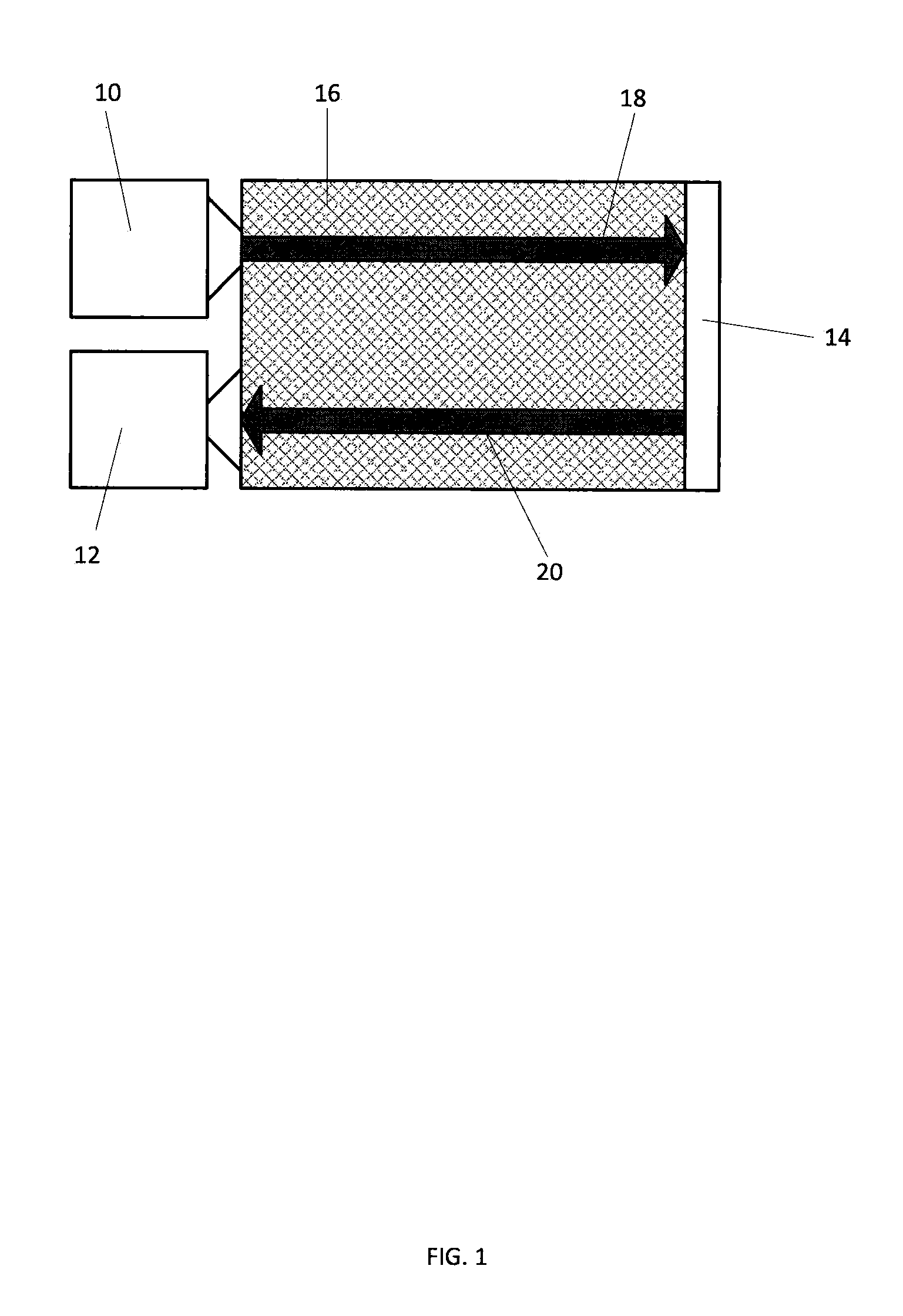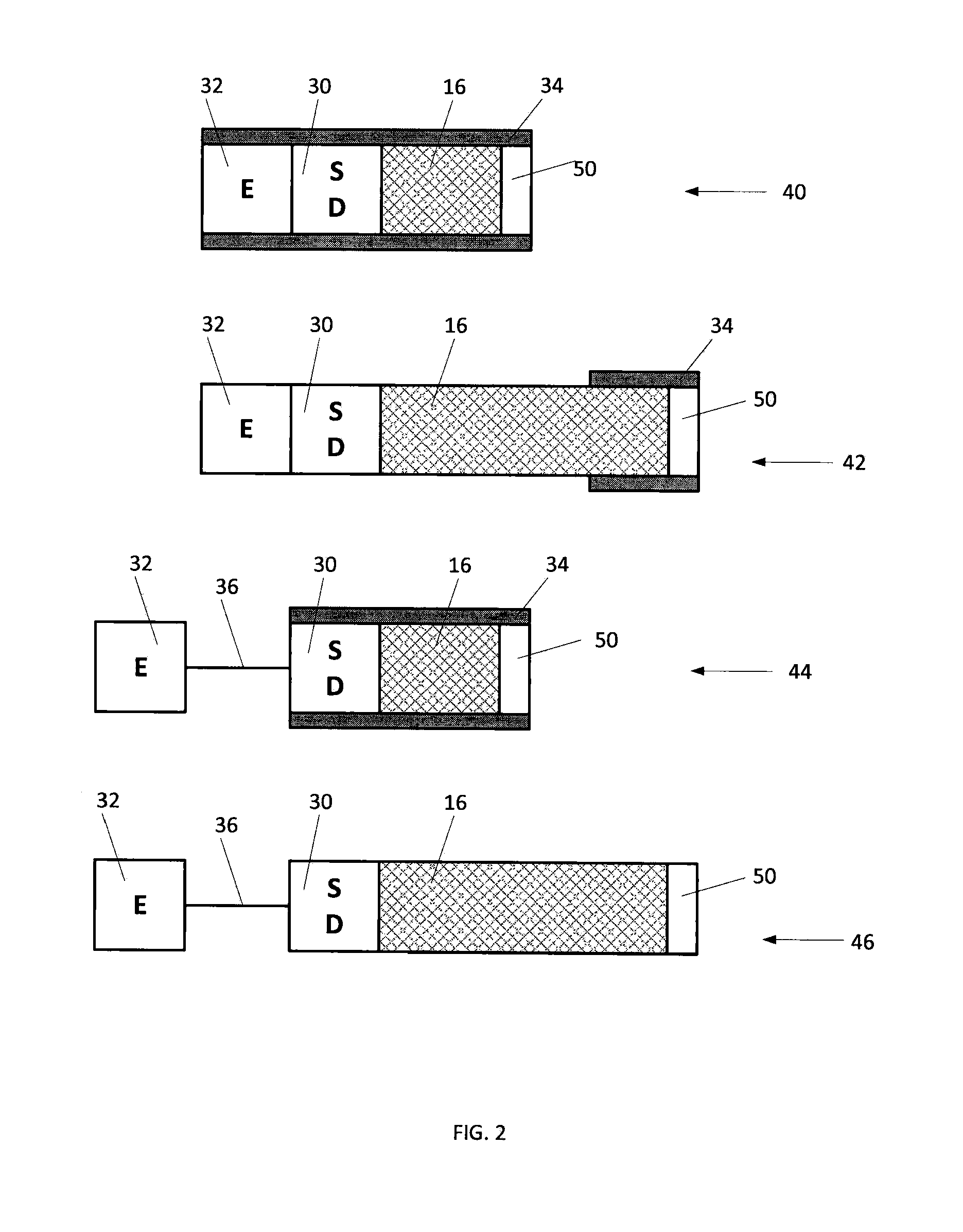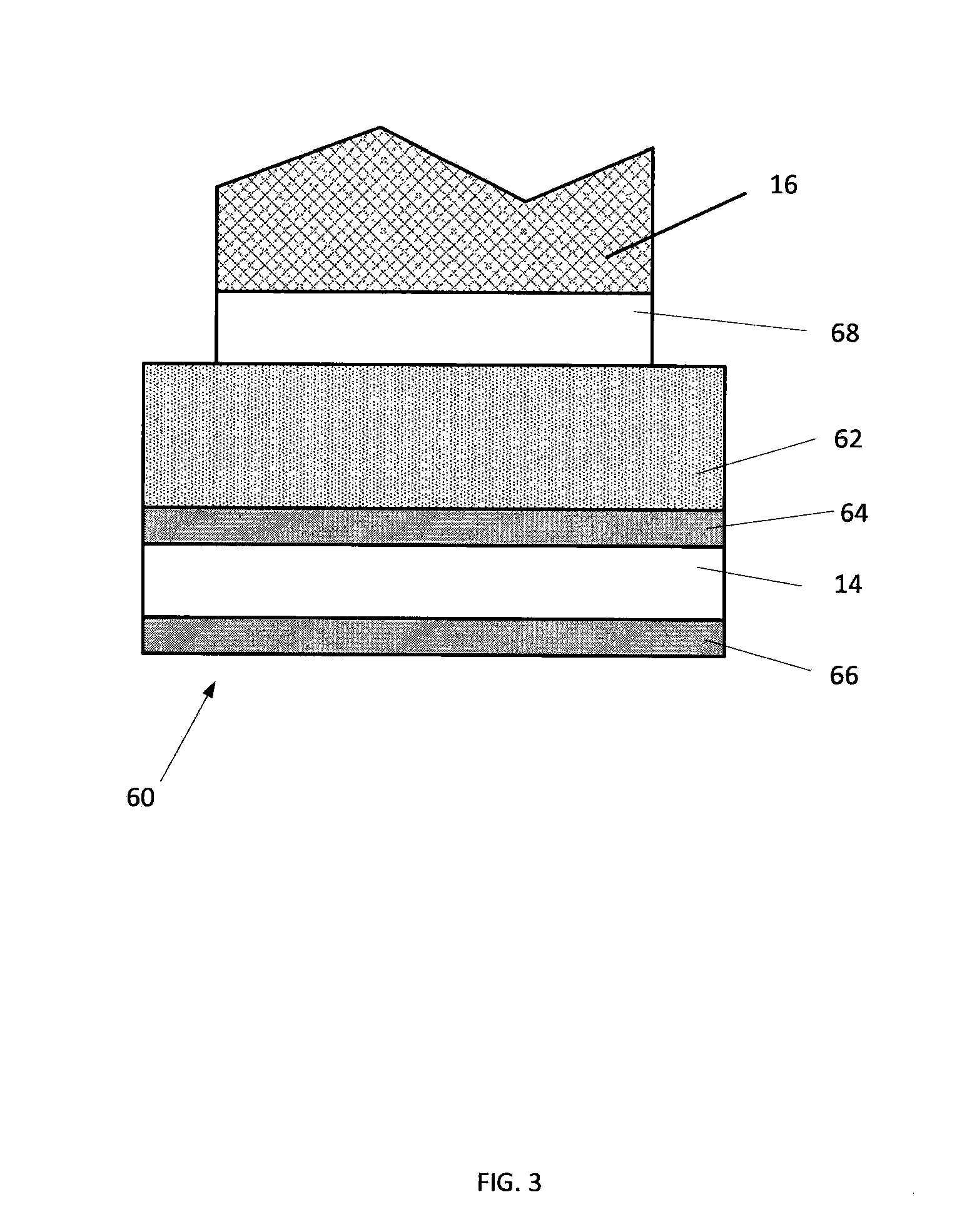Optical Sensor and Sensing System for Oxygen Monitoring in Fluids Using Molybdenum Cluster Phosphorescence
- Summary
- Abstract
- Description
- Claims
- Application Information
AI Technical Summary
Benefits of technology
Problems solved by technology
Method used
Image
Examples
Embodiment Construction
[0097]The following examples illustrate the preparation of an exemplary sensing film, primer, substrate, and light blocking layer; and presents experimental data obtained from an exemplary sensor comprising said components.
Exemplary Sensing Film Preparation
[0098]Molybdenum clusters are dispersed into an acrylated silicone resin (Gelest UMS-182; approximate molecular weight 5567; 15-20% acrylated). The presence of acrylate functional groups allows for a free radical cure, in this case photo-initiated cure using benzoin ethyl ether (BEE) as a photo-catalyst. The 254 nm line from a mercury lamp activates the BEE in an oxygen free environment. This combination was chosen as it lies outside the absorption window of the cluster. The clusters were dissolved into a mixture of acetone and acetonitrile. The acetonitrile solvates the clusters to ensure good sensor performance while the acetone acts as an emulsifier between the non-polar silicone and polar acetonitrile. A centrifugal shear mixe...
PUM
| Property | Measurement | Unit |
|---|---|---|
| Fraction | aaaaa | aaaaa |
| Molar density | aaaaa | aaaaa |
| Molar density | aaaaa | aaaaa |
Abstract
Description
Claims
Application Information
 Login to View More
Login to View More - R&D
- Intellectual Property
- Life Sciences
- Materials
- Tech Scout
- Unparalleled Data Quality
- Higher Quality Content
- 60% Fewer Hallucinations
Browse by: Latest US Patents, China's latest patents, Technical Efficacy Thesaurus, Application Domain, Technology Topic, Popular Technical Reports.
© 2025 PatSnap. All rights reserved.Legal|Privacy policy|Modern Slavery Act Transparency Statement|Sitemap|About US| Contact US: help@patsnap.com



